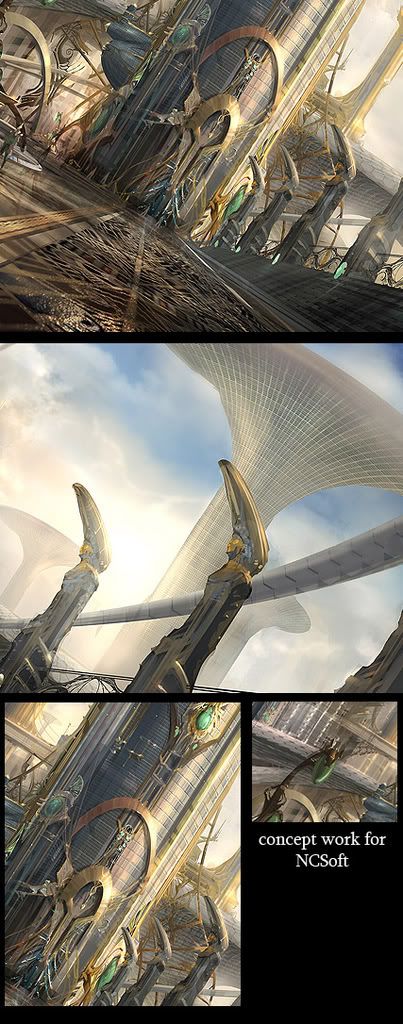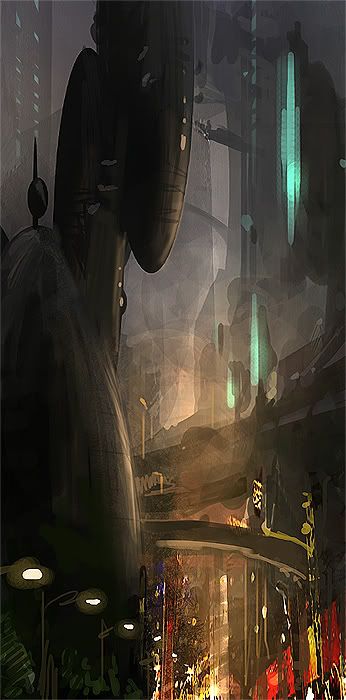My recent experience in painting has led me to a kind of 'depression'. My paintings (many of which I have not posted on the net) are just too damn muddy. Is it because of the brushes I use? My lack of understanding the basic principles of art? My utter lack of creativity?? I practice, but am I practicing the RIGHT way? Oftentimes I try to find the answers by observing budding artists and seeing how they deal with these "growing pains". I was going through the various threads when I spotted this artist - James. He had a blog... "Scribble Pad" was its name. I thought, "Maybe its going to be another amateur's art blog... I could learn a thing or too..." That's when I saw this guy's art. I then said, "HOLY CRAP!!"
 There's really nothing that can be said about this man's art. Every color seems to be in the right place. The shadows, the perspective, the emotions are all beautifully composed in each of these paintings. As someone who was interested in environmental art for a long time, I can say nothing but... "Yipee! Horray! My muddy art looks like a piece of s**t compared to this guy!"
There's really nothing that can be said about this man's art. Every color seems to be in the right place. The shadows, the perspective, the emotions are all beautifully composed in each of these paintings. As someone who was interested in environmental art for a long time, I can say nothing but... "Yipee! Horray! My muddy art looks like a piece of s**t compared to this guy!" Now that I think about it, I have seen this guy's art! I believe I used one of his paintings as the header for this blog. Oh well. All I can say is that he is the artist I aspire to be... one day.
Now that I think about it, I have seen this guy's art! I believe I used one of his paintings as the header for this blog. Oh well. All I can say is that he is the artist I aspire to be... one day. Like many great environmental artists, Mr. Paick's work is chock full of minute detail to enhance the realism. It simply isn't enough to stare at these thumbnails and not appreciate the amount of care and detail that was put in by the artist.
Like many great environmental artists, Mr. Paick's work is chock full of minute detail to enhance the realism. It simply isn't enough to stare at these thumbnails and not appreciate the amount of care and detail that was put in by the artist. This painting (above) to me is the most striking of the bunch. Not only does tilting the perspective offer a more dynamic composition, the detail and colors really help realize this place.
This painting (above) to me is the most striking of the bunch. Not only does tilting the perspective offer a more dynamic composition, the detail and colors really help realize this place. As you can see in these closeups, everything, from the ground to the grand tower is jam-packed with detail that it makes my mind explode. How does he do it?? The strange, radar like residential/office building thingies in the back helps enhance the mystery of this place as well. It seems to go on forever, thus expanding the scope of this piece.
As you can see in these closeups, everything, from the ground to the grand tower is jam-packed with detail that it makes my mind explode. How does he do it?? The strange, radar like residential/office building thingies in the back helps enhance the mystery of this place as well. It seems to go on forever, thus expanding the scope of this piece.






0 comments